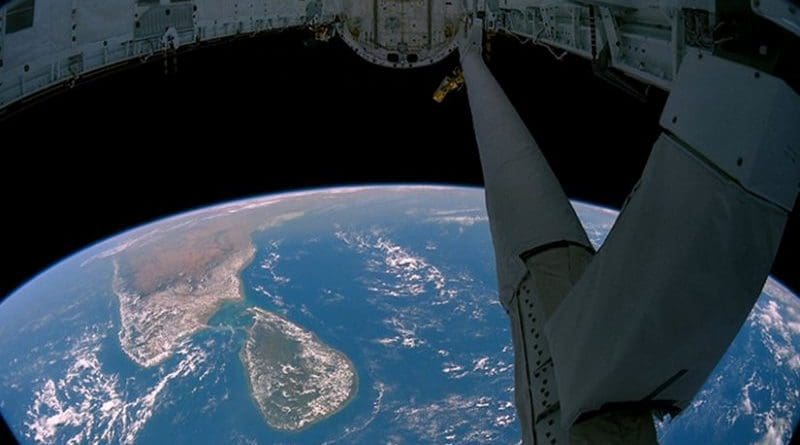The Changing Nature Of India-Sri Lanka Relations – Analysis
By Tridivesh Singh Maini*
One of the encouraging aspects of India-Sri Lanka relations is the fact that both sides are working to strengthen the economic and strategic relationship and address some of the major irritants in the relationship.
Only recently for instance during talks between External Affairs Minister Sushma Swaraj and Sri Lankan Foreign Minister Mangala Samaraweera in New Delhi it was agreed to set up a Joint Working Group (JWG) on Fisheries. Both sides also agreed to set up a hotline between Coast Guards of both countries to deal with the long-standing issue of fishermen from the state of Tamil Nadu being arrested by Sri Lankan authorities.
In recent years, two issues which cast a negative shadow over the bilateral relationship were the Tamil issue and the increasing presence of China in Sri Lanka. There has been a significant shift, however, with the change of guard in Sri Lanka as the current government is keen to reduce its dependence upon China. India, on its part, realises the economic potential of the island nation as well as its strategic location.
If one were to look at the current level of bilateral trade between both countries, it is estimated at $4.6 billion as of 2014. The FTA in 2000 gave a strong fillip to economic relations between both countries. Indian investments in Sri Lanka are estimated at $844 million and are in a number of sectors such as petroleum, IT, financial services, glass manufacturing and infrastructure. Some of the key investors include Lanka IOC (Indian Oil Corportation), Tata Communications, Axis Bank, ICICI Bank and Piramal Glass.
Sri Lanka, however, has not been able to access the Indian market.
During a visit to Colombo, Indian Commerce Minister Nirmala Sitharaman stated that Indian investments over the next 4 years are likely to rise to $2 billion.
The Economic and Technology Cooperation Agreement (ETCA), which both sides are expected to sign by the end of the year, is likely to further bolster the economic relationship between both sides.The ETCA will enable Sri Lankan businesses to get greater access to the Indian market. While speaking at the Indian Economic Summit in October 2016, Prime Minister Ranil Wickremesinghe referred to the immense possibilities if South Indian states with a GDP of $450 billion and Sri Lanka with a GDP of $50 billion could create a sub-regional economy of $500 billion.
It is not just the economic sphere but even in the area of tourism where cooperation between both countries has witnessed an increase. In July 2016, both countries signed an MOU to help each other in promotion of mutual tourism. While Sri Lanka will encourage Indian tourists keen to visit sites which are part of the Ramayana trail, the Indian government will encourage tourists from Sri Lanka interested in visiting Buddhist sites.
In the context of enhancing economic ties and tourism, India’s state governments are an important stakeholder. Indian state governments should reach out to Sri Lankan investors and encourage them to invest in India.
Even in the context of tourism, it is important for more and more state governments to reach out to Sri Lanka. A number of Sri Lankans visit Buddhist sites such as Sarnath (13 kms from Varanasi in Uttar Pradesh) , Sanchi and Bodh Gaya (Bihar) .
Last year, Sri Lankan President Maithripala Sirisena visited Ujjain for the Vichar Mahakumbh and also unveiled the statue of Dhammapathik Anagarika Dharmapala, a Sri Lankan Buddhist revivalist and writer who was one of the pioneers of non-violent Sinhalese Buddhist nationalism, at Sanchi.
Madhya Pradesh Chief Minister Shivraj Singh Chouhan announced the setting up of a friendship park at Sanchi which will strengthen friendship and cultural bonds between both countries. Delegates from Sri Lanka also attended the Buddhist conferences organised by the government of Orissa in 2013 and 2015.
To give a fillip to economic ties as well as tourism, a number of steps are required. First, connectivity needs to be enhanced. Currently, Sri Lanka is looking more at Southern India due to better connectivity. A number of other states in Western and Northern India too can emerge as important markets. An important step in this direction could be to further increase the number of direct flights between both countries.
Second, state governments which have been reaching out to countries in East Asia and South East Asia should seek to capitalise on the location of Sri Lanka, which has the possibility of emerging as a gateway between South Asia and South East Asia.
Third, the fears of Sri Lankans need to be dispelled that closer economic ties will only benefit India. India needs to send a clear message, that a robust bilateral relationship between both sides will be a win-win for both sides.
In conclusion, while irritants do remain in the bilateral relationship, there is a clear understanding of the need to overcome these and involve more stakeholders.
*Tridivesh Singh Maini is a New Delhi-based Policy Analyst associated with The Jindal School of International Affairs, Sonipat.

